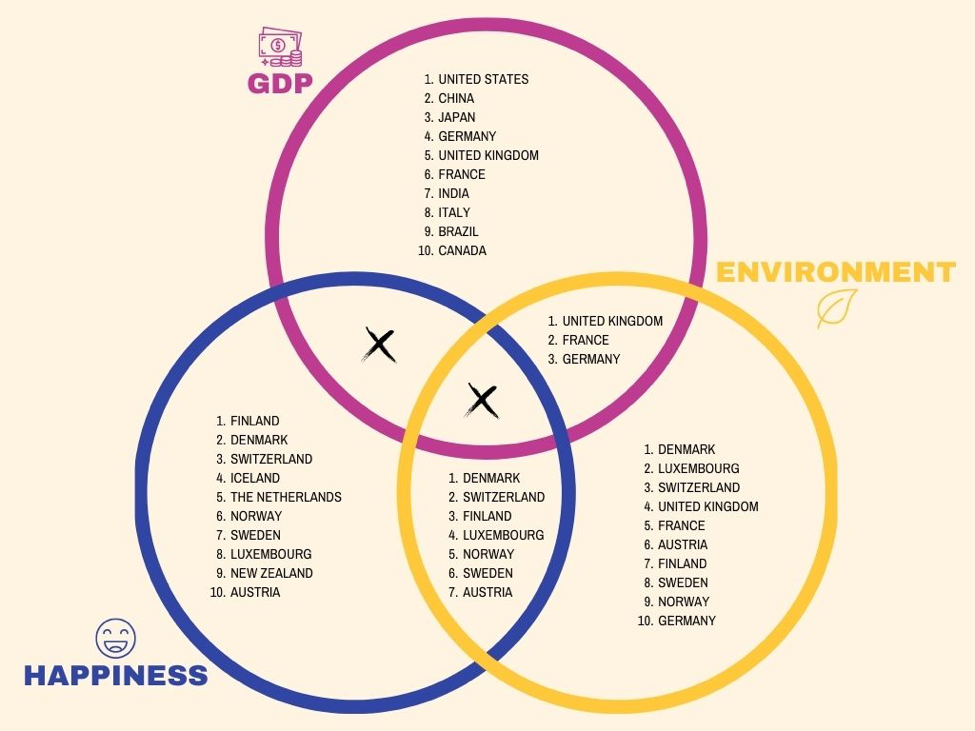Climate Action
Why happiness is good for the planet
November 24, 2021
When scientists and activists encourage the public to protect the environment in any way they can, what does that mean to you? Perhaps it means bringing reusable bags to the grocery store, recycling plastic, or donating your unwanted clothes.
But what if I said that you can help save the planet simply by focusing more on happiness and well-being?
As an individual, your own happiness affects the way you interact with the environment. Contrary to a common myth that consumerism equals happiness, studies have shown that happy people buy less stuff and buying less stuff makes you happier.
Another proven source of happiness is a connection to animals. Whether it’s a loyal family pet, a deer that comes to graze in your yard every morning, or an eagle that builds a nest in your neighborhood, animals consistently inspire happiness in people who engage with them. Animals also bridge the connection to nature.
A core part of EARTHDAY.ORG’s model for change is to “broaden the definition of ‘environment’ to include issues that affect our health and our communities.” In this vein, we must broaden the environmental movement to work synergistically and interdependently with the movement for a well-being economy.
Our current economic system is hyper focused on Gross Domestic Product (GDP). At its core, GDP is simply a measurement of the size of the economy. It was developed in the aftermath of the Great Depression to provide a snapshot of economic activity, but it is now used as a metric of power and status among nations.
Some argue that, like it or not, GDP is crucial for governments to make investments that improve well-being for their citizens and protect the environment.
The Venn diagram below compares the ten highest-ranked countries in three categories: wealth, happiness, and environment. The International Monetary Fund ranked the wealthiest countries by comparing nominal GDP. The happiest countries were determined by the World Happiness Report, based on six primary factors: income, health, social support, freedom, generosity, and trust in public institutions. For the rankings of environmental performance, researchers at Yale looked at 11 domains: air quality, sanitation and drinking water, heavy metals, waste management, biodiversity and habitat, ecosystem services, fisheries, climate change, pollution emissions, agriculture, and water resources.

The central takeaway from this diagram is the significant overlap between happiness and environment. Seven countries appear on both lists: Denmark, Switzerland, Finland, Luxembourg, Norway, Sweden, and Austria. Out of the top environmental performers, the only countries that failed to earn a spot on the happiness list are the same ones that overlap with GDP (U.K., France, and Germany).
At a bare minimum, we can conclude GDP is not the most important factor in determining environmental sustainability and the well-being of people. That’s because GDP only measures how much money a country has, not how a country chooses to spend it.
For this reason, GDP can be counterproductive to happiness and the environment. But it doesn’t have to be.
Governments need to start seeing GDP as a limited measurement that factors into national progress, but is ultimately inferior to measurements of happiness and environmental sustainability. Such a fundamental shift would allow lawmakers to prioritize the issues that save the planet while improving the lives of everyone on it.
Feeling optimistic yet? Learn how to channel your happiness into transformative change for the planet by following EARTHDAY.ORG on Twitter, Facebook, Instagram, and Youtube.